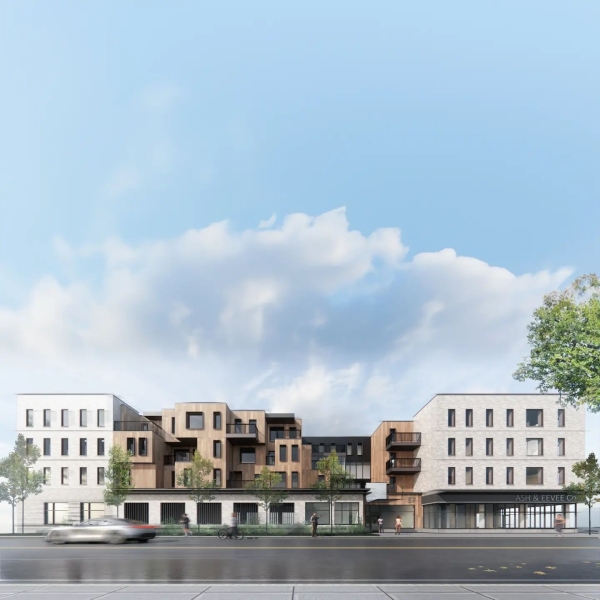The Bridgewater
Dedham, MA
Architect / Zephyr Architects
Structural / Souza, True, & Partners, Inc.
Landscape / MDLA
Project File

Located at 49-57 Bridge Street in Dedham, Massachusetts, this mixed-use development masterfully blends contemporary architecture with classic design elements, resulting in a striking yet cohesive façade that enriches the local streetscape. The project contributes to the ongoing positive transformation along the Bridge Street Corridor, activating the area and fostering community engagement.
Architectural Harmony
The building’s exterior showcases a thoughtful combination of brick and wood materials, offering a warm, natural appeal within its modern lines. This blend creates a visual harmony that respects Dedham’s historical context while introducing a fresh, contemporary aesthetic. Large windows and balconies are strategically integrated, elevating the interiors of all residential units by maximizing natural light and providing seamless indoor-outdoor connections.
Enhanced Livability
Public and private outdoor spaces are integral to the design, serving to enhance livability for residents. These include landscaped buffers that offer privacy and greenery, new sidewalks that improve pedestrian connectivity, and a feature pocket park that provides a tranquil retreat within the urban setting. Such amenities promote a sense of community and well-being, making urban living more enjoyable and sustainable.
Community Activation
At street level, a new restaurant space animates the ground floor, creating a vibrant social hub for both residents and the wider community. This commercial component not only enriches the local dining scene but also contributes to the economic vitality of the area. By hosting a dynamic mix of uses, the building fosters increased foot traffic and engagement along Bridge Street.
Positive Impact on the Bridge Street Corridor
The development goes beyond providing high-quality residential units; it serves as a catalyst for positive change along the Bridge Street Corridor. The incorporation of key site plan provisions—such as the pocket park and improved sidewalks—not only bestows community benefits but also enhances local infrastructure. These thoughtful interventions improve connectivity and encourage a more walkable, interactive neighborhood environment.
